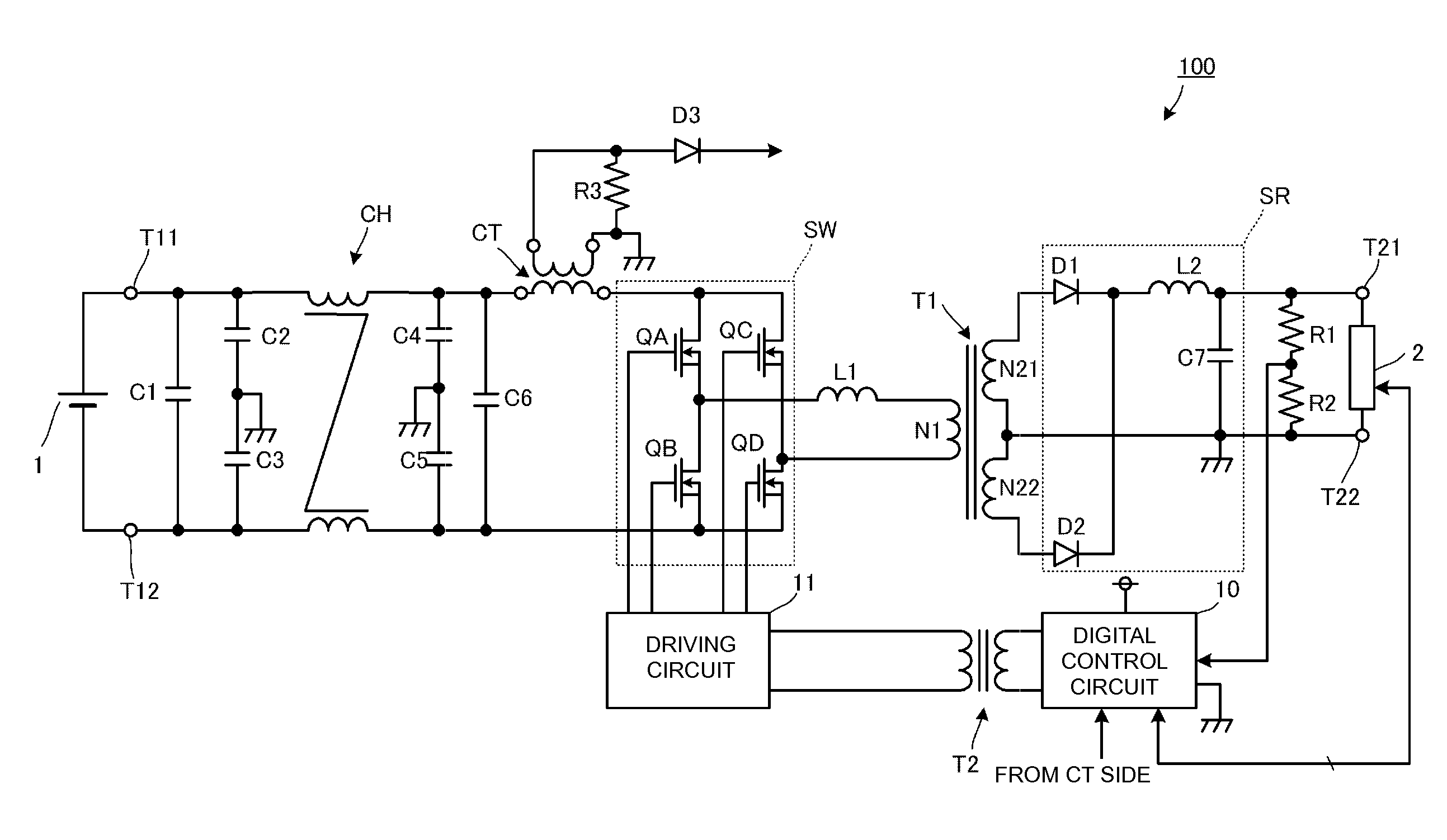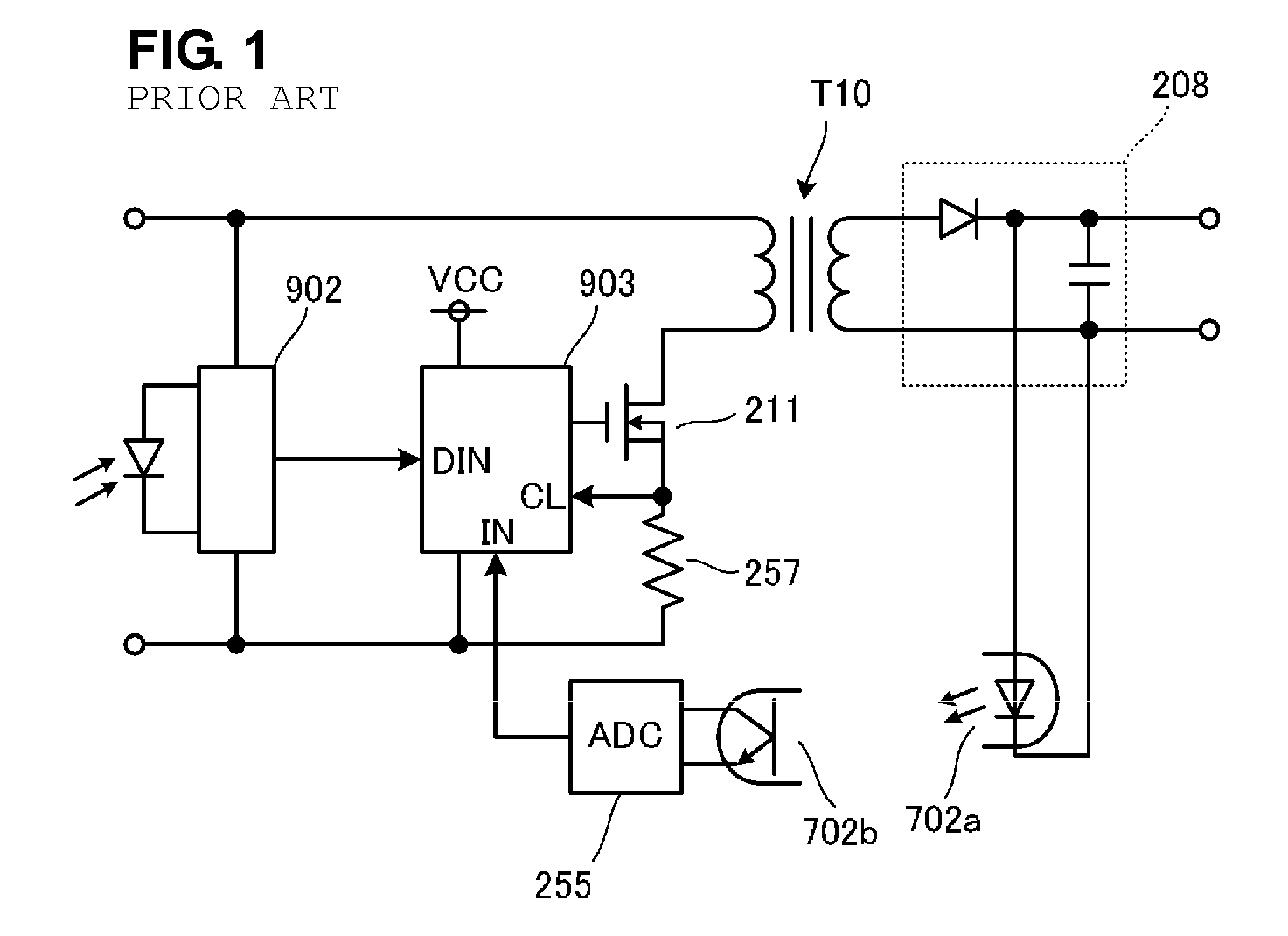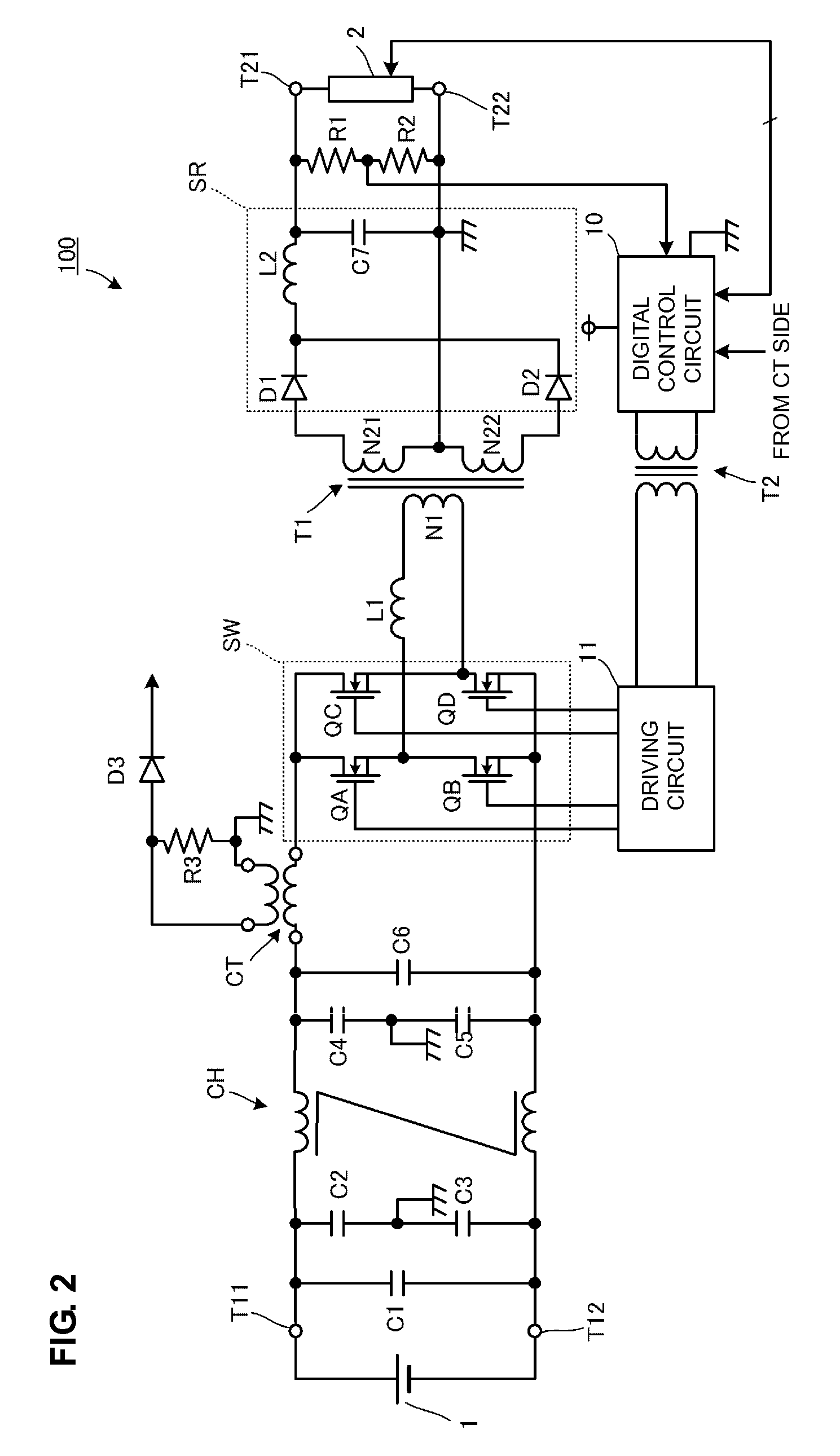Isolated DC-DC converter
a dc-dc converter and isolation technology, applied in the direction of dc-dc conversion, power conversion systems, instruments, etc., can solve the problems of deterioration with time, digital controllers cannot communicate with load (electronic devices), and the above-described advantages cannot be obtained, so as to increase the size of the converter
- Summary
- Abstract
- Description
- Claims
- Application Information
AI Technical Summary
Benefits of technology
Problems solved by technology
Method used
Image
Examples
Embodiment Construction
[0037]FIG. 2 is a circuit diagram of an isolated DC-DC converter 100 according to a preferred embodiment of the present invention. In FIG. 2, a transformer T1 includes a primary winding N1 and secondary windings N21 and N22. The primary winding N1 is connected to an inductor L1 and a switching circuit SW including four switching elements QA, QB, QC, and QD that define a bridge. A common mode choke coil CH, a filter circuit including by-pass capacitors C1 to C6, and a current transformer CT are disposed between an input power supply 1 and the switching circuit. A resistor R3 and a rectifying diode D3 are connected to a secondary side of the current transformer CT so that current flowing in a primary side of the current transformer is extracted as voltage signals. A circuit including this current transformer CT corresponds to a current detector according to a preferred embodiment of the present invention.
[0038]The four switching elements QA to QD of the switching circuit SW are connec...
PUM
 Login to View More
Login to View More Abstract
Description
Claims
Application Information
 Login to View More
Login to View More - R&D
- Intellectual Property
- Life Sciences
- Materials
- Tech Scout
- Unparalleled Data Quality
- Higher Quality Content
- 60% Fewer Hallucinations
Browse by: Latest US Patents, China's latest patents, Technical Efficacy Thesaurus, Application Domain, Technology Topic, Popular Technical Reports.
© 2025 PatSnap. All rights reserved.Legal|Privacy policy|Modern Slavery Act Transparency Statement|Sitemap|About US| Contact US: help@patsnap.com



